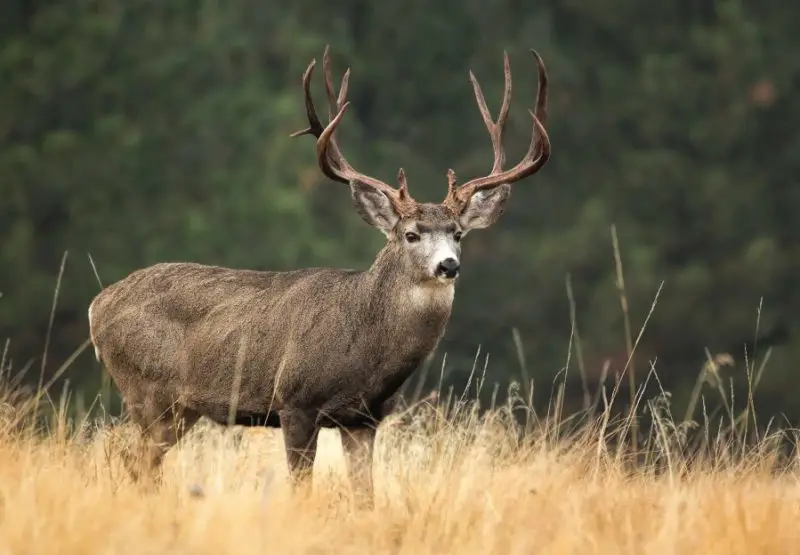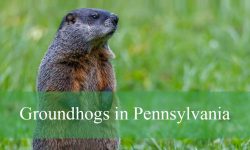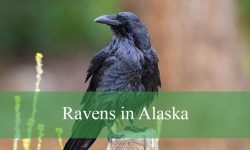Oklahoma hosts several deer species, each exhibiting distinct characteristics and occupying different habitats across the state. From the abundant white-tailed deer to the elusive Coues deer, the state offers plenty of opportunities for wildlife enthusiasts and hunters alike. Understanding their behavior and appearance can greatly enhance the experience of observing these graceful animals in the wild.
White-tailed deer dominate eastern and central Oklahoma, thriving in forests, farmlands, and brushy areas. Mule deer are less common, mainly found in western regions and the panhandle, preferring prairies and rocky terrain. Coues deer are rare, inhabiting southern border counties with dense brush and mesquite-dominated habitats.
Knowing where to find each species, what they eat, and their peak activity times is key for spotting them safely. This guide provides detailed information on identification, behavior, habitat, and observation tips for all three Oklahoma deer species.
White-tailed Deer (Odocoileus virginianus)

Identification and Appearance
White-tailed deer are the most recognizable and abundant deer in Oklahoma. Adult males, or bucks, usually weigh between 150–300 pounds, while females, called does, are smaller, averaging 100–200 pounds.
Their summer coat is a rich reddish-brown, blending perfectly in dense foliage, while the winter coat turns grayish-brown to match leafless landscapes. One of their most distinctive features is the white underside of the tail, which they flash upward when alarmed, signaling danger to other deer.
Bucks grow antlers annually, starting in spring and reaching full size by late summer, then shedding them in late winter. Antler size depends on age, genetics, and nutrition. Fawns are born with white spots on their reddish coats, which fade as they mature.
Habitat and Range in Oklahoma
White-tailed deer are highly adaptable, living in forests, woodlands, grasslands, brushy areas, and farmlands. They often feed on crops like corn and soybeans.
In Oklahoma, they are most common in the eastern and central regions, where forests and woodlands provide cover and food. Access to water from streams, ponds, or wetlands is important for hydration and temperature regulation.
They may move within their home range seasonally to find food, avoid hunting pressure, or escape harsh weather conditions.
Behavior and Diet
These deer are primarily crepuscular, meaning they are most active at dawn and dusk. In areas with little human activity, they may also feed during the day.
Their diet changes seasonally. In spring and summer, they eat tender shoots, leaves, and herbaceous plants. In fall and winter, they rely more on woody vegetation, acorns, nuts, and leftover crops.
White-tailed deer often follow established trails between feeding, bedding, and watering areas. Bucks may roam alone or in bachelor groups outside the breeding season, while does and fawns usually stay in small family groups. During the rut in autumn, bucks become territorial, spar sparring matches, and actively search for mates.
Observing Tips
The best times to see white-tailed deer are early morning or late afternoon, especially in cooler months. Look for tracks, droppings, and rubs on tree trunks from bucks.
Fall is a particularly good season because the rut increases deer activity. Bucks may engage in antler displays and travel more widely, providing excellent observation opportunities.
Using binoculars or a spotting scope is recommended to maintain distance, as deer are alert and easily spooked. Visiting areas with forest edges, open fields, and water sources improves chances of seeing them in natural behavior.
Mule Deer (Odocoileus hemionus)

Identification and Appearance
Mule deer are less common in Oklahoma and are mostly found in the western regions of the state. They are named for their large, mule-like ears, which are noticeably longer than those of white-tailed deer.
Their tail is narrow and has a black tip, distinguishing them from other deer species. The coat is a lighter grayish-brown, providing camouflage in open and rocky landscapes.
Bucks grow bifurcated antlers, meaning the main beams branch into two tines that can split again. These antlers are shed annually and typically reach full growth by late summer.
Habitat and Range in Oklahoma
Mule deer prefer arid and semi-arid habitats such as prairies, canyons, and rocky hills. In Oklahoma, they are primarily concentrated in the panhandle and western counties.
These areas offer open woodlands and brushy cover that help mule deer avoid predators and harsh weather. They often share their range with pronghorn antelope and other wildlife native to western Oklahoma.
Behavior and Diet
Like white-tailed deer, mule deer are primarily crepuscular, most active during dawn and dusk. They are browsers, feeding on shrubs, leaves, twigs, and herbaceous plants.
Mule deer are well adapted to areas with limited water availability, making them suited to semi-arid environments. Bucks become territorial during the breeding season and may engage in sparring matches to establish dominance.
Observing Tips
The best times to see mule deer are early morning and late afternoon. Look for them near ridges, rock outcrops, and areas with a mix of vegetation.
Mule deer are more cautious and alert than white-tailed deer, so it is often necessary to use binoculars or spotting scopes from a distance. Observers should also watch for tracks and droppings as signs of nearby deer.
Coues Deer (Odocoileus virginianus couesi)

Identification and Appearance
Coues deer are a smaller subspecies of white-tailed deer, typically weighing between 80–150 pounds. They have a slender body, short legs, and a compact build compared to typical white-tailed deer.
Their coat is reddish-brown in the warmer months and fades to grayish-brown during winter. Like other white-tailed deer, the underside of their tail is white, which they can raise when alarmed.
Bucks develop relatively small antlers compared to their body size, which are shed and regrown annually. Fawns are born with characteristic white spots, helping them blend into their surroundings.
Habitat and Range in Oklahoma
In Oklahoma, Coues deer are rare and mostly found in the southern border counties. They inhabit scrubby brushlands, riparian zones, and areas dominated by mesquite and other shrubs.
These deer are highly adaptable and can survive in semi-arid and subtropical habitats. They rely on dense vegetation for cover and water sources for hydration.
Behavior and Diet
Coues deer are agile and elusive, often moving quietly through their habitat to avoid predators. They feed on a variety of vegetation, including leaves, fruits, grasses, and herbaceous plants.
Unlike larger deer species, Coues deer usually travel in smaller groups, which helps them remain less visible. Their peak activity occurs at dawn and dusk, similar to other deer species.
Observing Tips
Because of their small size and secretive nature, Coues deer are best observed from elevated positions or during early morning and late evening hours.
Tracking signs such as footprints, droppings, and feeding marks can help locate them. Observers should focus on dense brush or areas near water sources, which are commonly used by this elusive subspecies.
Comparison of Deer Species in Oklahoma
Feature |
White-tailed Deer (Odocoileus virginianus) |
Mule Deer (Odocoileus hemionus) |
Coues Deer (Odocoileus virginianus couesi) |
|---|---|---|---|
Size |
Bucks: 150–300 lbs; Does: 100–200 lbs |
Bucks: 150–250 lbs; Does: 100–175 lbs |
Bucks: 80–150 lbs; Does: 70–120 lbs |
Antlers |
Bucks grow antlers annually; shed in late winter |
Bifurcated antlers that split into two main tines |
Small antlers relative to body size; shed annually |
Coat |
Summer: reddish-brown; Winter: grayish-brown |
Grayish-brown year-round |
Summer: reddish-brown; Winter: grayish-brown |
Tail |
White underside; flares when alarmed |
Narrow with black tip |
White underside; smaller and compact |
Habitat in Oklahoma |
Forests, woodlands, grasslands, farmlands; widespread in eastern and central counties |
Arid/semi-arid prairies, canyons, rocky hills; western and panhandle counties |
Rare; southern border counties, scrubby brushlands, riparian areas, mesquite regions |
Diet |
Leaves, twigs, fruits, nuts, grasses, crops |
Shrubs, leaves, twigs, forbs |
Leaves, fruits, grasses, herbaceous plants |
Behavior |
Crepuscular; bucks territorial during rut; fawns stay with does |
Crepuscular; bucks territorial during rut; cautious and alert |
Crepuscular; highly agile and secretive; smaller groups |
Observing Tips |
Early morning or late afternoon; look for tracks, droppings, rubs; best in fall during rut |
Early morning or late afternoon; watch ridges, rock outcrops; use binoculars |
Early morning or late evening; elevated vantage points; follow tracks, droppings, and water sources |
FAQs About Deer in Oklahoma
What deer species are found in Oklahoma?
Oklahoma is home to three main deer species: White-tailed Deer (Odocoileus virginianus), Mule Deer (Odocoileus hemionus), and the smaller Coues Deer (Odocoileus virginianus couesi). White-tailed deer are the most common, while mule deer are mainly found in western regions, and Coues deer are rare in southern counties.
How can I tell the difference between a white-tailed deer and a mule deer?
White-tailed deer have a broad tail with a white underside, reddish-brown summer coat, and antlers that grow forward and branch irregularly. Mule deer have large mule-like ears, a narrow black-tipped tail, grayish-brown coats, and bifurcated antlers that split into two main tines.
Where are the best places to see deer in Oklahoma?
White-tailed deer are widespread in eastern and central Oklahoma, thriving in forests, woodlands, grasslands, and farmlands. Mule deer are mainly in western counties and the panhandle, preferring prairies, canyons, and rocky hills. Coues deer are rare and usually found in southern border counties with scrubby brushlands and riparian areas.
What do Oklahoma deer eat?
White-tailed deer eat leaves, twigs, fruits, nuts, grasses, and agricultural crops. Mule deer primarily browse shrubs, leaves, twigs, and forbs. Coues deer feed on leaves, fruits, grasses, and herbaceous plants. Seasonal changes influence their diet, with more woody browse in fall and winter.
When is the best time to observe deer in Oklahoma?
Deer are most active during dawn and dusk. White-tailed deer are easiest to observe in fall during the rut. Mule deer are best seen early morning or late afternoon near ridges and rock outcrops. Coues deer are secretive and best observed from elevated positions during early morning or late evening.
Are Oklahoma deer dangerous to humans?
Deer are generally not aggressive but can become territorial during the rut, especially bucks. They can also cause vehicle collisions, which is the most common danger to humans. It’s best to observe them from a distance without attempting to feed or approach them.






